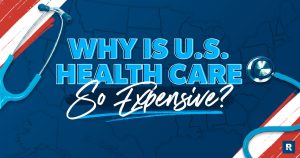The Biden administration will be placing millions of student loan borrowers into a forbearance this week, suspending their payments. The Education Department’s action follows a significant court order last week that blocked reduced payments and halted student loan forgiveness under a key initiative.
President Joe Biden’s new SAVE plan is a new income-driven repayment initiative designed to provide lower payments and faster loan forgiveness than previous IDR options. More than eight million borrowers have enrolled in SAVE or switched from other IDR plans, according to administration officials. But with lower payments set to go into effect this month, two groups of Republican-led states filed dual lawsuits to block the program. After a rollercoaster of rulings that had halted only certain elements of SAVE, the 8th Circuit Court of Appeals blocked the entire plan last week, throwing the program into turmoil.
With no time to instantly implement the court’s order, the Education Department quickly announced that it would take several actions, including placing the eight million borrowers currently enrolled in SAVE into a forbearance. Here’s what this means for borrowers.
Interest-Free Forbearance While Legal Challenges To Student Loan Forgiveness Continue
During the forbearance period, borrowers will not have to make student loan payments. And no interest will accrue.
“Borrowers enrolled in the SAVE plan are being moved into forbearance,” said new Education Department guidance released on Friday. “During forbearance, SAVE borrowers will not have to make payments.” In addition, “SAVE borrowers will not accrue interest on their loans during the forbearance.”
In that respect, the new SAVE forbearance will be like previous administrative forbearances the Education Department has implemented during the last year in the wake of loan servicer complications, which had impacted several federal student loan forgiveness and repayment plans.
Forbearance Period Will Not Count Toward Student Loan Forgiveness, Including PSLF
But unlike past administrative forbearances, the SAVE forbearance period will not count toward student loan forgiveness under IDR or PSLF, a program geared toward borrowers working in public service careers.
“The time in forbearance will not count toward Public Service Loan Forgiveness or Income-Driven Repayment (IDR) loan forgiveness,” said the Education Department definitively in its new guidance. This puts millions of borrowers who are on track for student loan forgiveness under PSLF and IDR in limbo for the time being. And the timing is particularly unfortunate for PSLF borrowers, as the department just unveiled a new PSLF tracking dashboard earlier this month.
IDR Applications Temporarily Removed
Separately, the Education Department indicated that it would be taking down online applications for IDR plans and Direct loan consolidation in the wake of last week’s court order. The department needs to update its internal systems in order to comply with the order, which will take time.
As of Monday, the online IDR and Direct loan consolidation applications are grayed out and inaccessible on the department’s website at StudentAid. gov.
“On July 18, 2024, a Federal Court issued a stay preventing the Department of Education from operating the Saving on a Valuable Education (SAVE) Plan,” says a message on the IDR and Direct loan consolidation websites. “We are assessing the ruling and will be in touch directly with borrowers about how this will affect them.”
This means that borrowers enrolled in SAVE and subject to the forbearance may be prevented (at least for now) from switching to another repayment plan in order to continue progressing toward loan forgiveness under PSLF or IDR.
Future of SAVE Plan And Student Loan Forgiveness Uncertain
The Education Department did not indicate how long the forbearance is expected to last. Given the whiplash of court rulings over the last several weeks, the situation remains very fluid. Administration officials have no way of knowing how long the chaos will last, or whether it will deepen further.
“Borrowers affected by this court decision will hear from their loan servicers and/or the Department in the coming days,” says the new guidance. “The Department will continue to update this page and pages on StudentAid.gov and what it means for borrowers.”
As the legal battle over SAVE’s reduced payments and student loan forgiveness benefits continues, it appears increasingly likely that the Supreme Court will ultimately step in. The Court is already considering an appeal involving a separate legal challenge to the SAVE plan from the 10th Circuit Court of Appeals, which — in contrast to the 8th Circuit — had temporarily allowed SAVE to proceed. When circuit courts issue different rulings on the same legal issue of national importance, the Supreme Court is far more likely to consider the challenge.
“The Biden-Harris Administration will continue to aggressively defend the SAVE Plan in court and continue to pursue all available tools to reduce the burden of student loans on borrowers across the country,” says the department’s guidance.
Read the full article here










